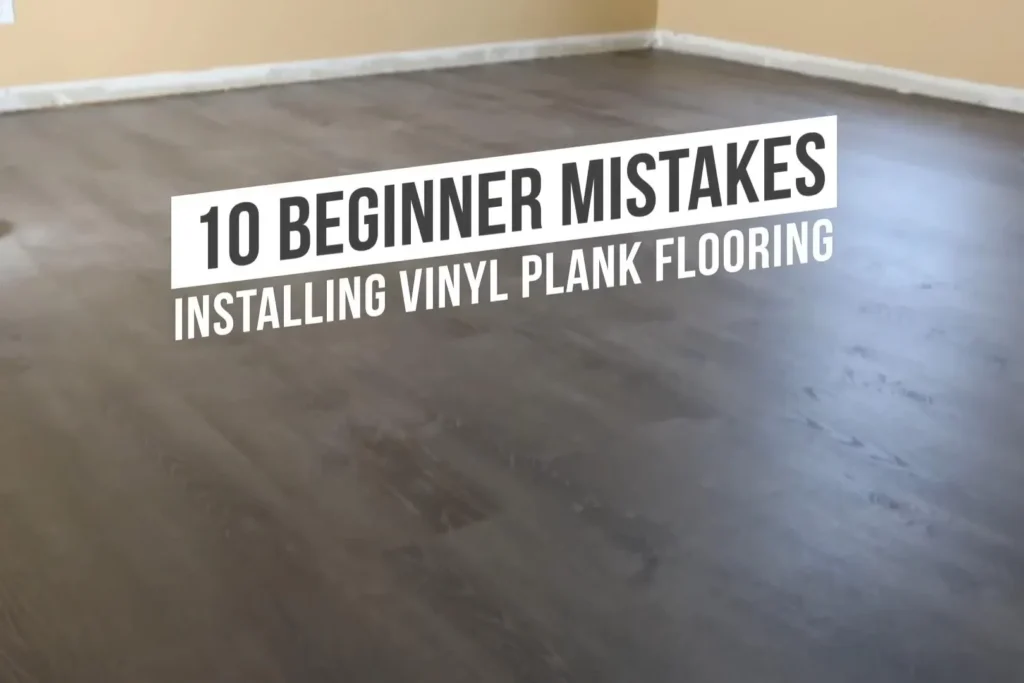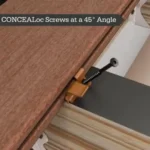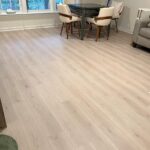Vinyl plank flooring is one of the most popular DIY flooring options in American homes today. It’s waterproof, durable, affordable, and often marketed as “easy to install.” But while it’s beginner-friendly compared to other flooring types, there are still many common mistakes when installing vinyl plank flooring that can cause long-term problems—like buckling, gaps, squeaks, or a cheap-looking finish.
If you’re planning to install vinyl plank flooring in your home, whether in a living room, bedroom, or basement, this guide will help you avoid the most frequent pitfalls. From improper subfloor prep to poor layout planning, here are 10 common mistakes to watch out for—plus tips to do it the right way.
1. Skipping Subfloor Prep
One of the most common mistakes when installing vinyl plank flooring is rushing through the subfloor preparation. Leftover staples, nails, or debris from previous flooring can lead to an uneven surface, causing the planks to shift, squeak, or separate over time.
Fix it: Thoroughly remove old flooring, staples, and any debris. Vacuum the entire area and inspect it on your hands and knees. Use a scraper or sander to smooth any rough areas. A clean, flat subfloor is essential for long-term performance.
2. Ignoring Loose or Popped Fasteners
A subfloor that looks solid can still have hidden issues. Loose nails or screws can make your new vinyl floor creak and move beneath your feet.
What to do: Walk slowly across the floor and listen for creaks. Re-secure loose fasteners by screwing them directly into floor joists. You can even add construction adhesive to seams for added stability.
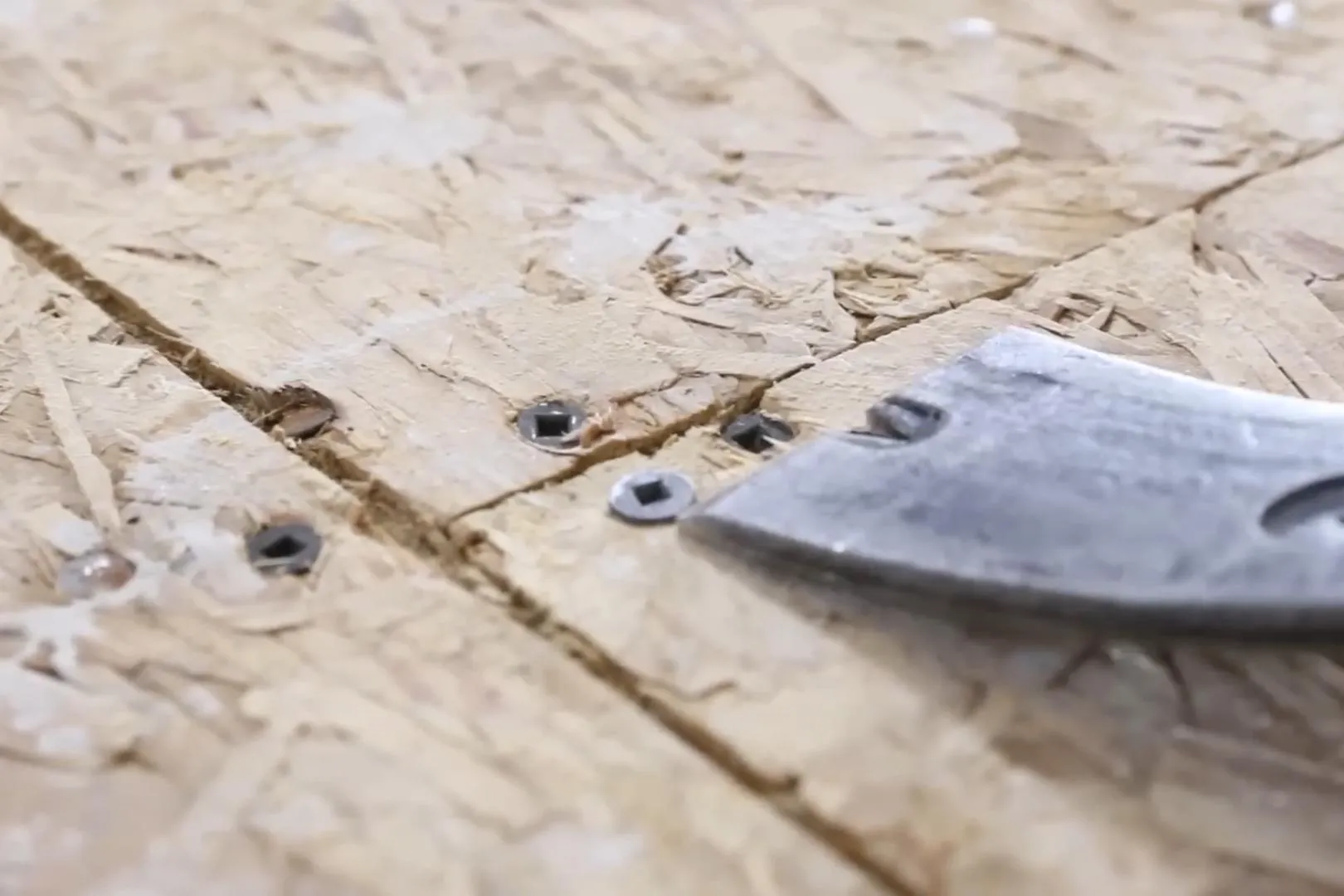
3. Leaving Baseboards in Place Without Planning
Some DIYers leave baseboards on the wall and install quarter-round molding to cover expansion gaps. While this is acceptable, it doesn’t deliver the most professional look—and in many cases, it’s a missed opportunity.
Pro tip: Remove baseboards before installing the flooring. This way, you can reinstall them over the edge of the vinyl planks for a cleaner finish. Use a trim puller to avoid damaging drywall.
4. Not Leveling the Subfloor
Uneven subfloors are one of the top reasons vinyl plank flooring fails. This is especially true with floating floor systems that depend on flat surfaces to lock in tightly. Any dips or humps can cause boards to bounce or separate.
Level check: Use a long level, straightedge, or laser level to detect problem areas. Fill in low spots with leveling compound and grind down high spots with a belt sander. Don’t lay a single plank until the floor is flat.
5. Neglecting Transitions Between Flooring Types
If you’re connecting your vinyl plank flooring to tile, carpet, or another material, you’ll need transition strips to bridge the gap. A common mistake is forgetting about them until the very end—resulting in awkward, last-minute fixes.
Plan ahead: Use T-molding or reducer strips where needed. Install any metal tracks or U-channels before laying planks so transitions are flush and secure.
6. Not Undercutting Door Casings and Trim
Many beginners cut their vinyl planks around door trim instead of undercutting it. This creates an unprofessional look and can prevent proper expansion.
How to fix it: Use a piece of scrap vinyl plank as a guide. Place it next to the trim and use an oscillating multi-tool to cut the trim at the right height. The result is a cleaner transition with room for natural movement.
7. Poor Layout Planning
Among the most common mistakes when installing vinyl plank flooring is starting without measuring or planning your layout. This often leads to having thin slivers of plank along one wall or repeating patterns that look unnatural.
Best practice: Measure the width of the room and divide by plank width. If the final row is under 2 inches wide, cut the first row to balance it. Always stagger end joints by at least 6 inches to improve both appearance and stability.
8. Thinking You Need Expensive Tools
You don’t need a table saw or fancy power tools to install vinyl plank flooring. Many brands are designed to score and snap, making them easy for DIYers.
Essentials only: A utility knife, straight edge, rubber mallet, tapping block, spacers, and a pull bar are enough for most jobs. For tricky cuts (vents, corners), a jigsaw or oscillating tool helps, but it’s optional.
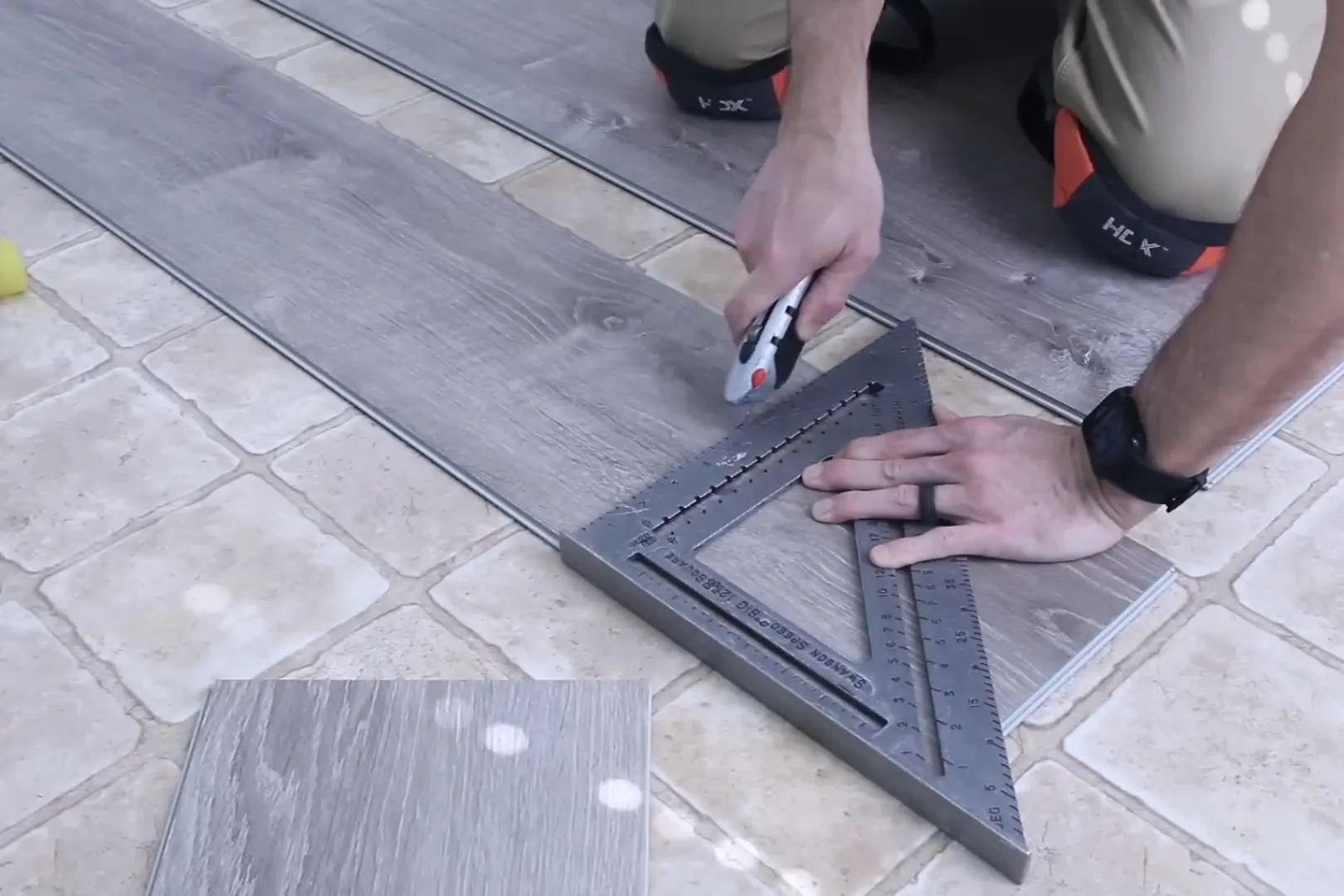
9. Messy Cuts Around Vents and Obstacles
Sloppy cuts around floor vents or toilet bases are a visual eyesore—and can even lead to structural issues. Trying to force a cut after the plank is laid often results in cracks or uneven edges.
Do it right: Measure and mark vent outlines before installing the plank. Use a drill to create starter holes in each corner, then cut with a jigsaw. Clean cuts make a huge difference in the final appearance.
10. Adding Unnecessary Underlayment
Many modern vinyl plank products already come with built-in underlayment. Adding an extra layer can interfere with locking mechanisms and may even void your warranty.
Read the specs: Always check the packaging and manufacturer instructions. If your planks have an attached pad, don’t add more unless the brand approves it. For concrete subfloors, a moisture barrier is sometimes required—but not always.
Conclusion
Installing vinyl plank flooring is a satisfying DIY project, but skipping the details can lead to costly mistakes. From subfloor prep to layout and transitions, being aware of these common mistakes when installing vinyl plank flooring ensures your hard work pays off with a long-lasting, professional-looking finish.
Want more vinyl floor installation tips, creative home ideas, or buying guides? Visit ecobuildhome.com for in-depth articles, expert recommendations, and step-by-step tutorials for every room in your home.
FAQ
Do I need to remove baseboards before installing vinyl plank flooring?
You don’t have to remove baseboards, but it’s highly recommended for a cleaner, more professional finish. Removing baseboards allows the vinyl planks to expand and contract underneath and helps hide the expansion gap without adding extra trim like quarter-round molding.
Can I install vinyl plank flooring over existing tile or hardwood?
Yes, in many cases you can install vinyl plank flooring over existing tile, hardwood, or laminate, as long as the surface is flat, clean, and in good condition. Be sure to check for loose tiles, deep grout lines, or any uneven spots that might need leveling first.
How do I know if my subfloor is level enough for vinyl planks?
Use a long level or straightedge to check for dips or high spots. Most manufacturers recommend that the subfloor be within 3/16 inch over a 10-foot span. If your floor isn’t level, use a floor-leveling compound or sanding tools before starting installation.
Do I need underlayment for vinyl plank flooring?
That depends on the product. Many vinyl plank options come with built-in underlayment, especially those designed for floating floors. If your flooring doesn’t have attached padding, or if you’re installing over concrete, you may need a moisture barrier or separate underlayment. Always check the manufacturer’s recommendations.
Should I glue down vinyl plank flooring or use a floating method?
Most homeowners prefer floating vinyl plank flooring, which locks together without glue and is easier to install and replace. Glue-down vinyl is more permanent and better suited for commercial settings or high-traffic areas. The best choice depends on your subfloor, room use, and product type.
